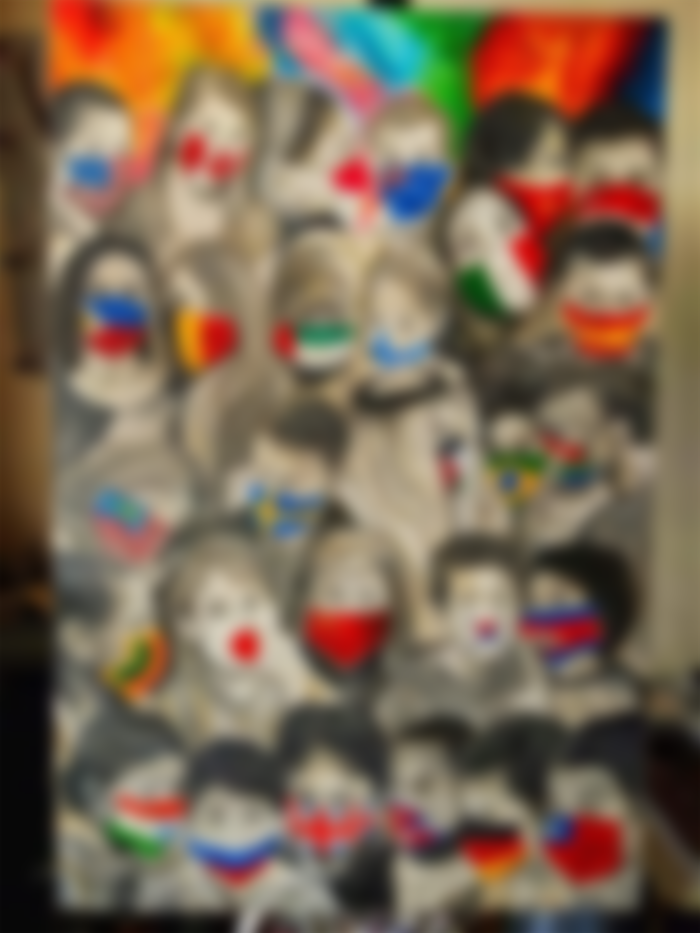
Face masks keep us safe, but do make communication more challenging!
I recently came across a list of 10 suggested strategies to help improve communication while wearing a mask. They were primarily written for healthcare practitioners, but most of the principles apply to other various life situations.
I thought that the subject is important, especially that it looks like we will be wearing masks for quite some time!
So, without further ado, here is the list:
1. Focus on what you can do.
Immediacy behaviors such as moving closer to someone, smiling, and touching may be difficult during COVID-19, but there are other ways to establish interpersonal closeness. You can maintain genuine eye contact, lean forward toward the patient, have an expressive tone of voice, and use gestures. If you are working in an inpatient setting, you may need to re-introduce yourself when you re-enter a room as it will be harder for patients and families to remember faces when masked.
2. Be an active listener:
When a patient is speaking, use nonverbal encouragement (head nods, forward lean, etc.) and maintain eye contact. While wearing a mask, the message your eyes and body language are sending becomes amplified. You may feel confident that you can look at a patient's chart and listen at the same time, but not all patients share that perspective. A lack of eye contact can contradict a verbal invitation for patient participation. If you ask the patient, "Is there anything else you'd like to discuss?" but accompany this question with a "no" head shake or pulling away and looking at the chart, the patient gets the impression that no further information is welcomed.
However, the call for more eye contact comes with an important caveat:
3. Do not engage in uncomfortable levels of eye contact:
Genuine eye contact should occur while the patient is speaking, but genuine does not mean continuous. You should gaze comfortably between the patient, the chart, and your notes. Just be aware of those specific conversational moments that require direct eye contact: (1) implicit or explicit requests for attention (i.e., pauses, emotions, and questions) and (2) conversational turns: establish eye contact before you start talking and to signal that it's the patient's turn to talk.
4. Mirror what you are saying with hand gestures and body language:
Try to integrate simple gestures like a hand wave to signal "hello" and "goodbye"; a thumbs-up or okay sign to deliver positive news, offer encouragement, and confirm understanding or agreement; and a shoulder shrug or "huh" hand gesture to express uncertainty or lack of understanding. These forms of nonverbal communication make your communication more expressive, and reinforce a verbal message that may be muffled behind a mask.
5. Exaggerate emotion with your eyes, not your entire face:
Patients may be able to tell that you are smiling from behind a mask, but exaggerating your smile all day can be exhausting. Instead, focus on expressing emotion using your eyes and eyebrows (along with hand gestures).
6. Use vocal variety to convey emotion:
Your patients cannot see your smile behind your mask and may misconstrue a neutral expression for a negative one. By varying your rate, pitch, tone, and volume you can more accurately convey emotion. With that being said...
7. Focus on talking slower, not louder:
When you face communication challenges with patients due to language barriers or other limitations, you may find yourself speaking louder even if the patient has no trouble hearing. You have probably noticed yourself doing the same thing while wearing a mask. This comes across as aggressive or dominant, and will likely tire the muscles in your face quickly.
Speaking slowly will help you conserve energy and will increase understanding (which means you won't have to repeat yourself!). An added benefit of talking slowly is that it conveys to your patient that you value the time you are spending with them and are not in a hurry to rush off to another patient.
8. Look for empathic opportunities:
An empathic opportunity describes when a patient expresses an emotion, a challenge (e.g., negative experience or event), or progress (e.g., positive change or event). You should listen for empathic opportunities and view them as a prompt to respond using acknowledgment, praise, validation, or support: all forms of responsive communication. Learning to listen for these empathic opportunities can be particularly important when facial expressions are masked. You can also elicit these empathic opportunities by asking patients directly about their reactions/feelings when you are unable to read facial expressions.
9. Minimize dominant communication:
Dominant communication involves controlling the conversation. These behaviors are associated with power, authority, and compliance-gaining, which can have negative impacts on patient outcomes. These behaviors intensify the perceived distance between you and your patient that already exists while wearing masks. Some dominant behaviors include standing during the visit, interrupting the patient, and making the patient wait for you without explanation.
10. Modify your communication to match your patient’s:
Communication accommodation refers to the extent to which two or more people match or differ the other person's verbal and nonverbal behavior during an interaction. Matching helps convey interest and relational closeness -- especially when both parties are wearing masks -- and is useful for developing trust. You should try to match your patient's behaviors including talk time, body position, speech rate, gesturing, nodding, and eye contact.
Hope this helps improve our communication in healthcare and other life situations.
Thank you for reading.

Most doctors used masks even before the Covid-19 and the use of masks is a trend. This article is for people who do not leave home without a mask. Physicians should speak aloud to the patient so that the patient can understand the words correctly. It is also important to understand eye contact because it is not appropriate to speak loudly everywhere. This awareness is beneficial for all of us. Thanks for the info dear!